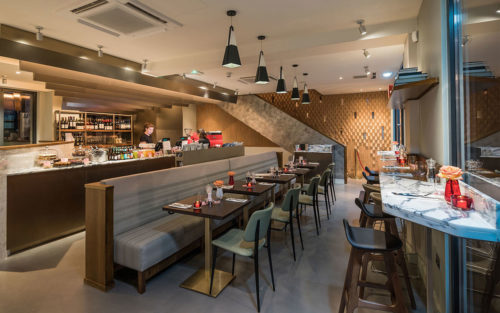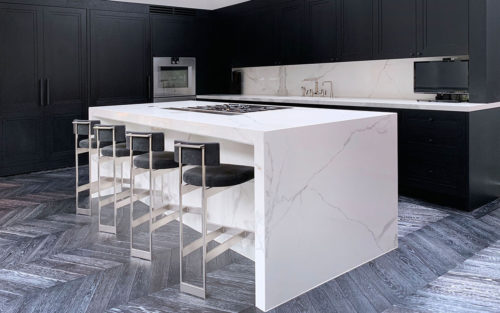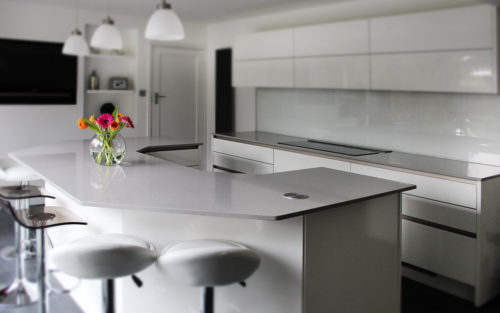Although granite worktops in Bishops Stortford have long been popular, at Marble & Granite we do get a lot of calls for marble as well. This is not surprising as marble has been attracting fans for hundreds of years.
A lot of marble is, of course, white, and may have a variety of graining. But it does come in many other colours as well, including greens, browns, blues, reds, and even black.
Before marble becomes marble, it is first limestone, and limestone is formed on the sea bed in tropical climates and is composed of masses of pieces of the shells of sea creatures, shelly bits, minute shells, and dissolved pieces of shell which consist of the mineral calcite. Depending on the conditions in that particular area, there may also be a certain amount of clay.
The sea-bed has moved over millions of years, and it can get dragged under continents at the edges and drawn down into the heat. The combination of the heat and the pressure has the effect of fusing the calcite grains together and they also warp and bend, while any clay present also gets moulded into different shapes which result in the many different swirls and veins that are seen in classic marble.
With that said, the majority of marble is white, with pure white being pure calcite with no other minerals present. The different colours can be green which is caused by serpentine which has a lot of magnesium in it. Red and brown are the result of iron oxide, as are gold and pink marble. If a marble has a steely-grey appearance that is due to graphite.
When you are choosing marble for your worktops, you need to consider how the slabs will fit together, because in most kitchens you will need more than one slab. Of course, the longer the piece of marble that you can get without any seams the better, but if you are going to have seams, the best way, some people consider, is to book-match the veining in the slabs so that adjacent pieces have a mirrored appearance. Furthermore, while all quarries are different, some types of marble can be cut in two different ways to achieve different veining patterns. Vein-cut will give a linear, striped pattern while crosscut gives a random open look.
As for the finish on marble worktops, the most popular choice is still polished. A honed finish provides a more matte appearance and would be the better choice for people who are concerned that marble can etch if it gets contact from things such as vinegar or lemon juice which are acidic. On a polished surface, etching causes a dulling effect so is more noticeable than on a honed surface which is already effectively dulled.
You also need to consider the edges of a marble worktop. If you have a 90° angle and you hit it with something hard, it is very likely to chip. On the other hand, if you have a curved edge – perhaps something like a bull’s nose – it is much less likely that it will chip.
You also need to know the difference between cracks and fissures. If a marble slab has a crack, it has been improperly handled or dropped. A fissure, on the other hand is a naturally occurring feature in the stone and you should be able to drag your nail across it without it catching. Some people accept a fissure as part of the natural process of creation, which it is.
The other thing to remember is that marble does need protection with a sealer in order to protect against staining.



